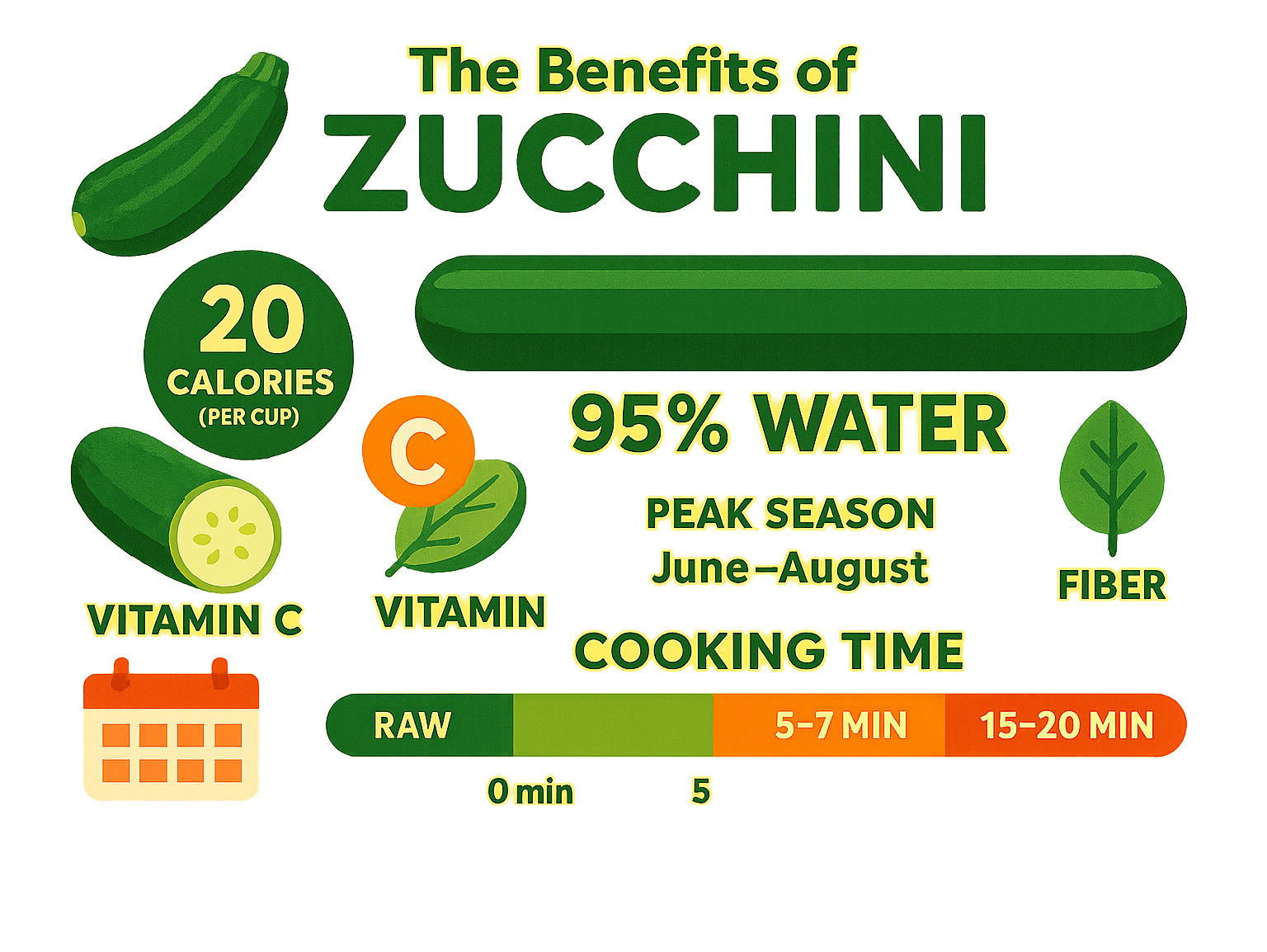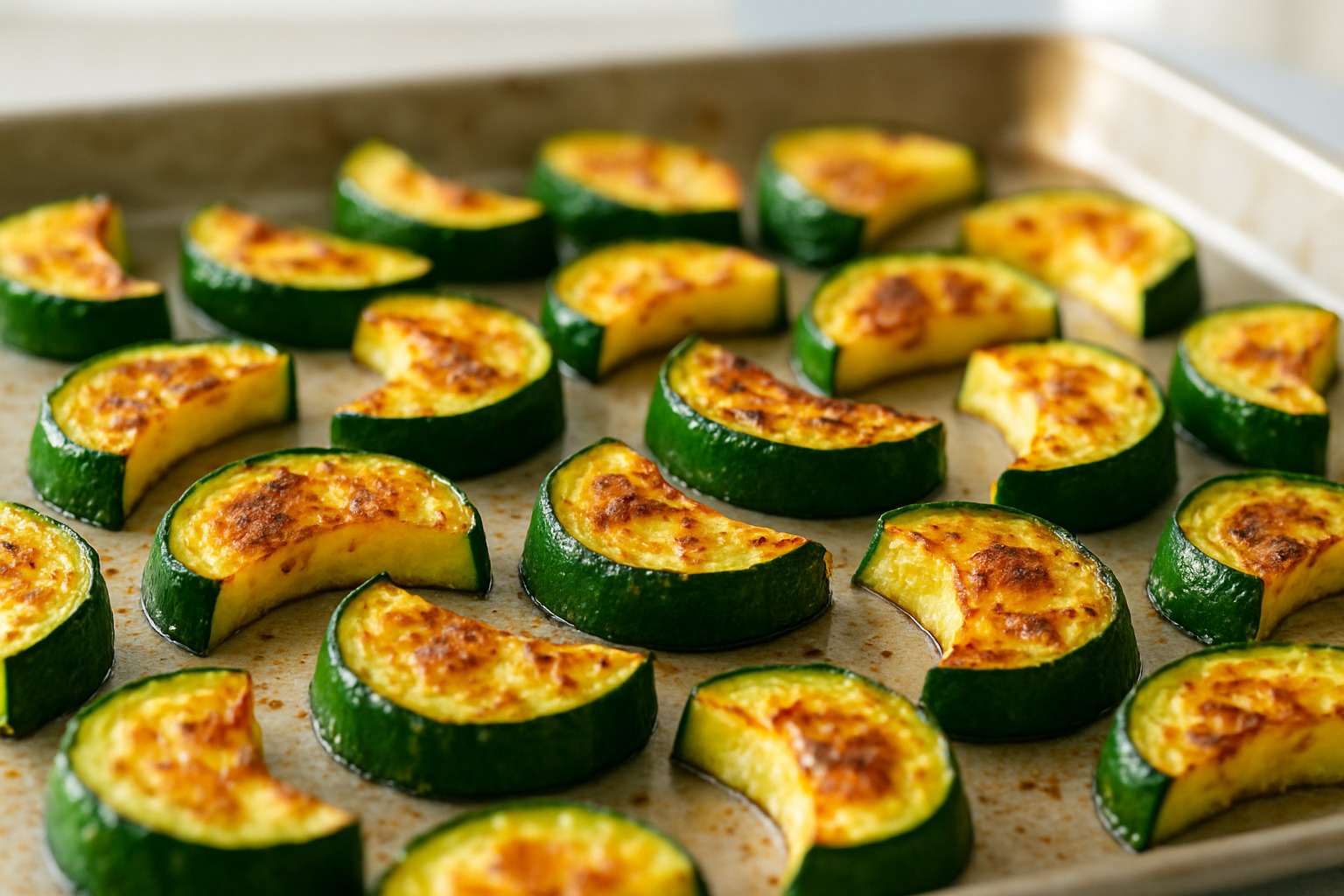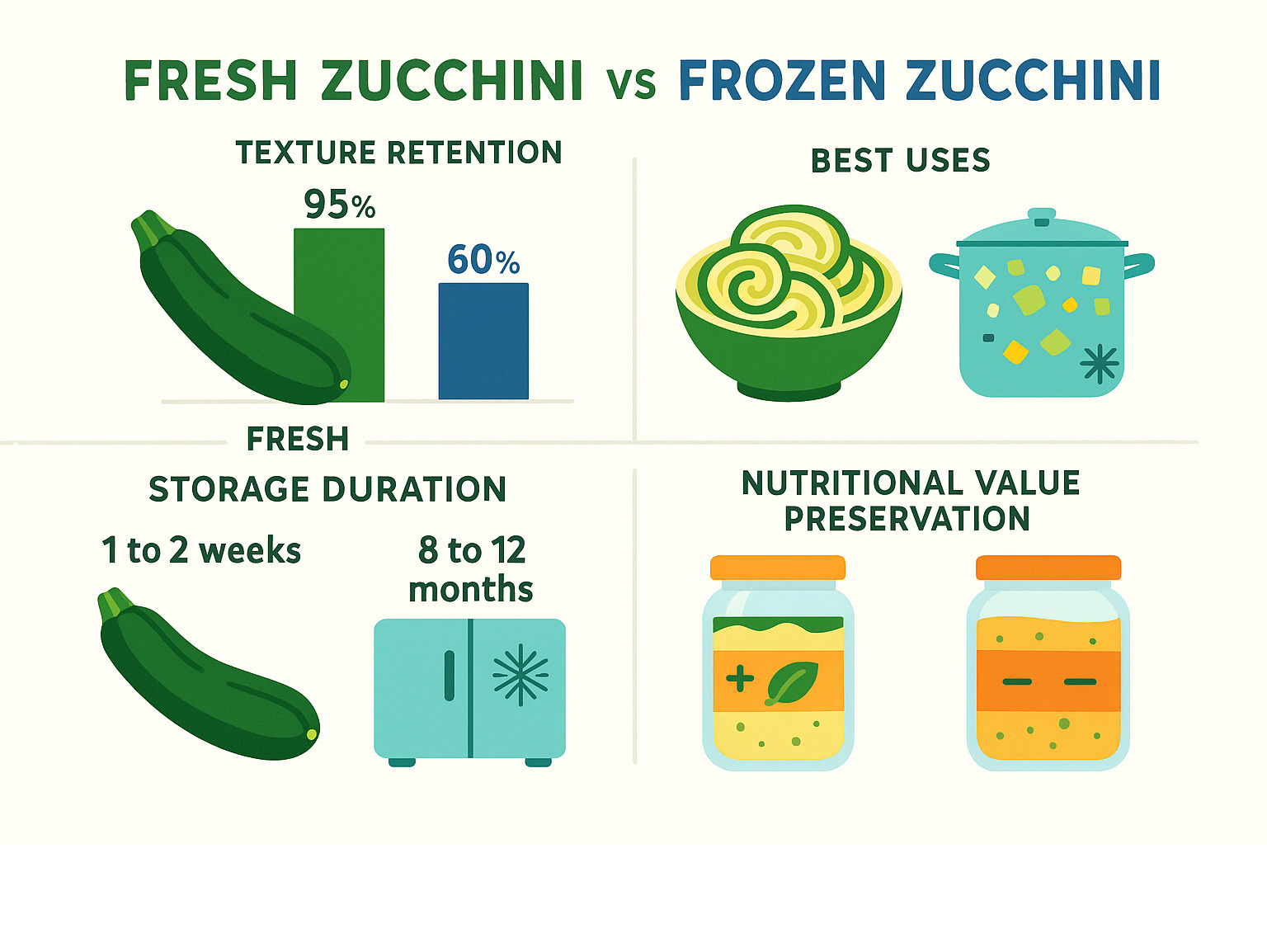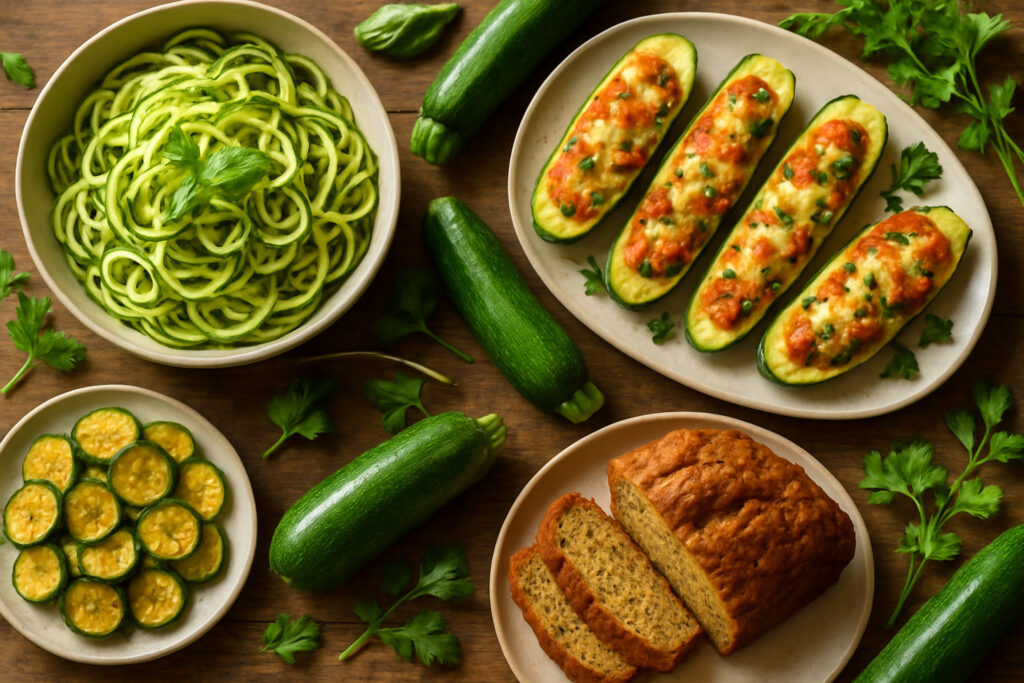Why Summer’s Most Versatile Vegetable Deserves a Spot in Your Kitchen
Zucchini recipes offer home cooks an incredible range of options, from crispy appetizers and hearty main dishes to surprisingly delicious desserts. Whether you’re dealing with a garden glut or simply want to explore new flavors, zucchini transforms into everything from pasta alternatives to chocolate brownies.
Quick Answer: Top Zucchini Recipe Categories
- Breakfast: Muffins, bread, smoothies, frittatas
- Lunch: Salads, stuffed boats, grilled sides, soups
- Dinner: Casseroles, pasta dishes, stir-fries, lasagna
- Snacks: Chips, fritters, carpaccio, dips
- Dessert: Chocolate bread, brownies, cakes, cookies
As one food blogger noted after eating most of a tray for lunch, “These zucchini are so addictive that you won’t stop eating them.” That’s the magic of this summer squash – it’s abundant from June through August, cooks in as little as 10 minutes, and adapts to nearly every cooking method you can imagine.
The secret lies in understanding zucchini’s versatility. Unlike many vegetables that work best in specific dishes, zucchini acts as a culinary chameleon. It absorbs flavors beautifully, provides moisture to baked goods, and can even replace higher-carb ingredients without sacrificing taste.
From crispy roasted half-moons that achieve golden edges in just 15-20 minutes to silky risottos that accept zucchini’s natural moisture, these recipes prove that summer’s most prolific vegetable deserves serious kitchen respect.

Zucchini recipes definitions:
Reason #1: Zucchini Is a Kitchen Chameleon
Here’s what makes zucchini truly special: it’s the ultimate kitchen shapeshifter. This summer squash moves effortlessly between sweet and savory dishes, making it one of the most adaptable vegetables you’ll ever work with. Whether you’re dealing with a garden bounty from your backyard or picking up fresh zucchini from the farmers market, this versatile vegetable transforms to match whatever you’re craving.
The secret lies in zucchini’s mild flavor and high water content. While these qualities might seem ordinary, they’re actually superpowers in disguise. Zucchini acts like a culinary sponge, soaking up the flavors around it while adding moisture and nutrition to your dishes.
Think about the possibilities: raw ribbons created with a vegetable peeler bring crisp texture to summer salads. Stuffed boats become hearty vessels for rice, herbs, and cheese. And when you’re looking for a lighter dinner option, zucchini makes an excellent pasta swap – spiralized into noodles that satisfy your craving for comfort food without the heaviness.
Endless Meal Possibilities With Zucchini Recipes
The beauty of zucchini recipes is that they work around the clock. Start your morning with breakfast muffins that get their incredible moisture from grated zucchini. The vegetable disappears into the batter, leaving behind tender, flavorful results that nobody would guess contain a serving of vegetables.
For lunch salads, zucchini shines when eaten raw – try shaving it into thin ribbons or dicing it for crunch. When dinner time arrives, casseroles become comfort food classics, with zucchini adding substance and nutrition to hearty baked dishes.
But here’s where zucchini really surprises people: it makes incredible dessert brownies and chocolate cakes. The vegetable’s natural moisture creates fudgy, rich textures that rival any traditional recipe. One baker we know swears that her chocolate zucchini brownies are so good, people actually request the recipe.
From morning to night, zucchini adapts to whatever role you need it to play. It’s this incredible flexibility that makes it such a valuable ingredient for home cooks who want to eat well without spending hours in the kitchen.
Reason #2: Foolproof Techniques for Non-Soggy Zucchini Recipes
Nothing ruins a perfectly good zucchini recipe quite like that dreaded mushy texture. We’ve all been there – you’re excited about your beautiful summer squash, only to end up with a watery, lifeless dish that nobody wants to eat. But here’s the good news: achieving perfectly crisp, golden zucchini isn’t rocket science once you understand a few key principles.
The secret lies in embracing high-heat roasting at 425°F or higher. This technique creates those gorgeous caramelized edges while keeping the interior tender but never soggy. When we cut our zucchini into uniform half-moon shapes about 1 inch thick, each piece cooks evenly and develops that beautiful golden crust we’re after.
Single-layer cooking is absolutely crucial, whether you’re roasting in the oven or sautéing on the stovetop. Crowding zucchini pieces together creates steam, which is the enemy of crispy vegetables. Give each piece room to breathe, and you’ll be rewarded with proper browning instead of that sad, steamed texture.

For recipes that call for grated zucchini, salting and draining becomes your best friend. Sprinkle salt over freshly grated zucchini, let it sit for 10-15 minutes, then squeeze out the excess moisture using a clean kitchen towel. This extra step might seem tedious, but it prevents soggy fritters and watery baked goods while actually concentrating the zucchini’s natural flavor.
The air-fryer hack has revolutionized how we think about quick zucchini preparation. Those uniform cuts we mentioned earlier work beautifully in an air fryer, creating restaurant-quality results in about half the time of traditional roasting.
Scientific research on vegetable texture
The Zucchini Recipes Golden Rules
After testing countless batches of zucchini, we’ve finded four non-negotiable rules that guarantee success every time. Pat-dry your zucchini before cooking – even if you’ve just washed it, those water droplets will create steam and prevent proper browning.
Avoid crowding might sound repetitive, but it’s worth emphasizing because it’s the most common mistake we see. Whether you’re using a baking sheet, skillet, or grill, resist the urge to fit everything in one batch. Your patience will be rewarded with evenly cooked, beautifully browned zucchini.
Flip once and then leave it alone. We know it’s tempting to move things around, but zucchini needs time to develop that golden crust. Let one side get properly caramelized before flipping to the other side.
Finally, season late in the cooking process. Adding salt too early draws out moisture, which can make your carefully prepared zucchini turn watery. Wait until the last few minutes of cooking to add your seasonings for the best results.
Reason #3: Speedy Weeknight Winners
After a long day, the last thing you want is to spend hours in the kitchen. That’s where zucchini recipes truly shine – they’re your ticket to delicious, home-cooked meals in 15 minutes or less. We’ve finded that zucchini’s tender texture and mild flavor make it one of the fastest-cooking vegetables around.
The 10-minute skillet method has become our weeknight lifesaver. Simply heat olive oil in a pan, add sliced zucchini, and let the magic happen. The secret? Use medium-high heat and resist the urge to constantly stir. This patience pays off with those gorgeous caramelized edges that make even the simplest zucchini irresistible.
For busy families, sheet-pan zucchini Parmesan delivers restaurant-quality results in just 12 minutes at 450°F. One brilliant home cook finded that aligning zucchini wedges so they’re touching creates a natural way for the parmesan and breadcrumbs to stick – no tedious individual dredging required!
One-pot pasta dishes featuring zucchini solve the eternal “what’s for dinner?” dilemma beautifully. Add zucchini to your pasta during the last few minutes of cooking, and you’ll have a complete meal in a single pot. The starchy pasta water works its magic, binding everything together into a silky sauce that coats both pasta and vegetables.
Spiralized zoodles represent the ultimate speed cooking – they transform from raw to tender in just 2-3 minutes in a hot pan. We love tossing them with garlic and olive oil, or mixing them half-and-half with regular pasta for extra nutrition without sacrificing satisfaction.
These recipes are incredibly meal-prep friendly too. Cook extra portions on Sunday, and you’ll have the foundation for lightning-fast dinners all week long.
More info about Easy Dinner Ideas
Zucchini Recipes That Cook in 15 Minutes or Less
When every minute counts, these ultra-quick preparations become absolute game-changers:
Stir-fry style zucchini takes just 3-4 minutes when cut into matchsticks and tossed with garlic and ginger. The high heat and constant movement create incredible flavor while keeping that perfect tender-crisp texture.
Microwave chips might sound unconventional, but they’re ready in under 5 minutes. Thinly slice your zucchini, arrange on a microwave-safe plate, and cook in 1-minute intervals until crispy. It’s not as hands-off as oven methods, but the speed is unbeatable.
Quick baked wedges represent our fastest oven option – cut zucchini into wedges, toss with oil and seasonings, then bake at 450°F for just 10-12 minutes. The high heat creates that golden exterior we all crave while keeping the interior perfectly tender.
Reason #4: Health-Forward & Low-Carb Zucchini Recipes
When we talk about vegetables that pack a nutritional punch without weighing down your meal plan, zucchini tops our list. At just 20 calories per cup and boasting a 95% water content, this summer squash delivers hydration and essential nutrients while keeping your calorie count refreshingly low.
For anyone following a keto-friendly or low-carb lifestyle, zucchini becomes your secret weapon in the kitchen. Those spiralized zucchini noodles we mentioned earlier? They contain just 4 grams of carbs per cup compared to a whopping 43 grams in regular pasta. That’s a game-changing difference that opens up so many more possibilities for your daily meal planning.
But here’s what we love most about zucchini – it doesn’t feel like you’re making a sacrifice. The high fiber content (2 grams per cup) keeps you satisfied long after your meal ends, while supporting healthy digestion. This fiber also helps slow sugar absorption, making zucchini recipes a smart choice for anyone managing blood sugar levels.
The vitamin profile is equally impressive. Zucchini delivers vitamins A and C for immune support, plus potassium for heart health. Those antioxidants hiding in the skin – particularly lutein and zeaxanthin – support eye health, which is especially important in our screen-heavy world.
For our vegetarian and vegan friends, zucchini offers endless creative possibilities. We’ve seen it stuffed with quinoa and herbs, grilled as a satisfying main course, and layered into hearty plant-based casseroles. The mild flavor means it plays well with bold international seasonings, from Mediterranean herbs to Asian-inspired sauces.
More info about Chicken Recipes
Why Nutrition Lovers Flock to Zucchini Recipes
The beauty of zucchini goes beyond basic nutrition facts. Those antioxidants we mentioned? They’re working hard to protect your cells from daily damage while supporting overall wellness. The highest concentration lives in the skin, so we always recommend leaving it on when possible.
That impressive hydration factor becomes especially valuable during hot summer months when zucchini is at its peak. The natural water content, combined with electrolytes like potassium, makes zucchini an excellent choice for active people who want to stay properly hydrated through their food.
Perhaps most importantly, the gut-friendly fiber in zucchini acts as a prebiotic, feeding the beneficial bacteria in your digestive system. This support for gut health can improve digestion and may even boost immune function, since so much of our immune system is connected to gut health.
The result? A vegetable that tastes great, cooks quickly, and genuinely supports your health goals – whether you’re looking to reduce carbs, increase vegetable intake, or simply feel better about what’s on your plate.
Reason #5: Creative Ways to Use a Garden Glut
If you’ve ever grown zucchini, you know the drill – one day you’re eagerly waiting for your first harvest, and the next you’re practically begging neighbors to take some off your hands. Instead of letting this summer abundance overwhelm you, we’ve finded some brilliant ways to preserve and transform your zucchini recipes into year-round treasures.
Freezing zucchini cubes has become our go-to preservation method. Simply grate fresh zucchini, squeeze out the excess moisture (this step is crucial!), and freeze the portions in ice cube trays. Once solid, pop them into freezer bags for easy storage. These frozen cubes work beautifully in smoothies, adding nutrition without any detectable flavor, and they’re perfect for baking projects when fresh zucchini isn’t available.
Pickling transforms zucchini into a tangy, crunchy condiment that brightens everything from sandwiches to charcuterie boards. Quick pickles are surprisingly simple – you can have them ready in just 30 minutes. We love experimenting with different spice combinations: classic dill and garlic for traditional flavor, or chili flakes and ginger for an Asian-inspired twist that adds excitement to rice bowls.
For the ultimate preservation project, try making zucchini butter. Similar to apple butter, this concentrated spread captures all of summer’s essence in a jar. It’s perfect for gifting to neighbors who are also drowning in zucchini, and it makes an excellent base for marinades or as a unique spread for toast.
Of course, chocolate zucchini bread remains the classic solution for good reason. It’s delicious enough that people actually request it, and it uses up impressive quantities of zucchini. One enthusiastic baker told us they made it “all summer long” because their family couldn’t get enough.

Zero-Waste Zucchini Recipes
We’re passionate about using every part of the zucchini, and you’d be amazed at what you can create from the parts most people throw away. Zucchini peel pesto is a revelation – those nutrient-rich peels blend beautifully with garlic, olive oil, and nuts to create a vibrant green sauce that’s both delicious and resourceful.
Zucchini stocks and soups make excellent use of those oversized zucchini that have gotten away from you. You know the ones – they’re hiding under the leaves and suddenly they’re the size of baseball bats. Their mild flavor creates a neutral base that accepts any seasoning you throw at it. We particularly love a simple basil zucchini soup that tastes like summer in a bowl.
Grated zucchini freezer packs are a game-changer for busy bakers. Pre-measure the exact amounts your favorite recipes call for, squeeze out the moisture, and freeze in labeled portions. When you want to make muffins or bread on a weeknight, half the prep work is already done.
Don’t forget about the zucchini flowers – they’re completely edible and absolutely delicious when stuffed with ricotta and herbs, then lightly battered and fried. This restaurant-quality appetizer transforms your garden glut into a gourmet experience that will impress any dinner guest.
Frequently Asked Questions about Zucchini Recipes
How do I stop zucchini from turning mushy?
The secret to perfect zucchini recipes lies in understanding that this summer squash is 95% water – and that’s actually a good thing when you know how to work with it! We’ve learned that the mushiness problem usually comes from fighting against zucchini’s natural moisture instead of embracing it.
Start with uniform cuts about 1-inch thick. These chunkier pieces hold their shape much better than thin slices, which tend to fall apart during cooking. When roasting, crank up your oven to 425°F and give each piece plenty of space on the pan. Crowded zucchini steams instead of caramelizes, and that’s where the dreaded mushiness begins.
For stovetop cooking, here’s our game-changing tip: season just before cooking, not during prep. Salt draws out moisture, so adding it too early creates a puddle in your pan. Heat your skillet first, add the zucchini, then season. Let each side develop that beautiful golden crust before flipping – patience is key!
When you’re grating zucchini for bread or fritters, always salt, wait, and squeeze. Salt the grated zucchini, let it sit for 10-15 minutes, then wrap it in a clean kitchen towel and squeeze out the excess water. This simple step prevents soggy results and actually concentrates the flavor.
Can zucchini replace pasta completely?
While zucchini noodles make a fantastic low-carb alternative, we’ve finded that the 50/50 approach often works best for most home cooks. Mixing zucchini noodles with regular pasta gives you the satisfaction of traditional pasta while cutting carbs significantly – it’s like having your cake and eating it too!
Pure zucchini noodles shine brightest with lighter preparations. Think oil-based sauces, fresh pesto, or simple tomato preparations that won’t weigh down the delicate zucchini. Heavy cream sauces can make zucchini noodles feel watery, while lighter options let the vegetable’s fresh flavor come through.
For heartier dishes, consider using zucchini ribbons in lasagna or adding diced zucchini to your favorite pasta sauce. This way, you’re boosting nutrition and adding interesting texture without completely changing the dish your family loves.
The key is managing expectations – zucchini noodles have their own wonderful texture that’s different from wheat pasta, but equally delicious when prepared with care.
What’s the best way to store zucchini ahead of time?
Fresh zucchini is surprisingly cooperative when it comes to storage. Keep it in your refrigerator’s crisper drawer where it will stay fresh for 4-5 days. Here’s the important part: don’t wash it until you’re ready to cook! Excess moisture is zucchini’s enemy, and wet skin can lead to quick spoilage.
Store zucchini in a perforated plastic bag – this maintains just enough humidity while allowing air circulation. If you don’t have perforated bags, poke a few holes in a regular plastic bag with a fork.
For longer storage, blanched and frozen zucchini works wonderfully in soups, stews, and baked goods, though it won’t have the crisp texture needed for fresh preparations. Think of frozen zucchini as your secret weapon for adding moisture to chocolate bread or bulking up winter soups.
Already prepared zucchini dishes keep well too. Sautéed zucchini can be refrigerated for 2-3 days and gently reheated on the stovetop to restore some texture. And here’s a pro tip: zucchini bread and muffins freeze beautifully and can be thawed as needed for quick breakfasts or unexpected guests.
Conclusion
Our journey through zucchini recipes shows just how amazing this summer vegetable can be when you know how to work with it. From crispy breakfast fritters to decadent chocolate brownies, zucchini proves that the best ingredients are often the simplest ones sitting right in your garden or at the farmers market.
The beauty of seasonal cooking shines through with zucchini’s peak season from June through August. During these months, you can experiment with everything from quick 10-minute sautés to elaborate stuffed boats, knowing that you’re cooking with nature’s rhythm. This abundance also teaches us valuable lessons about resource-smart cooking – turning potential waste into delicious meals that your family will actually want to eat.
What excites us most at The Dining Destination is how zucchini connects us to global culinary traditions. Whether you’re making Italian zucchini carpaccio, Asian-inspired stir-fries, or Mexican-style stuffed blossoms, this versatile vegetable bridges cultures and brings international flavors to your home kitchen. It’s food tourism in your own backyard.
The foolproof techniques we’ve shared – from proper salting methods to high-heat roasting – ensure that you’ll never have to deal with mushy zucchini again. These skills transfer to other vegetables too, making you a more confident cook overall.
As we continue exploring zero-waste cooking and mindful eating habits, zucchini stands as a perfect example of how one ingredient can solve multiple kitchen challenges. It’s nutritious enough for health-conscious meals, versatile enough for picky eaters, and abundant enough to share with neighbors who are also drowning in summer squash.
These five reasons why you’ll love zucchini recipes are really just the starting point. Once you master these basics, you’ll find yourself reaching for zucchini year-round, whether it’s frozen cubes in winter smoothies or pickled slices that brighten up January salads.








